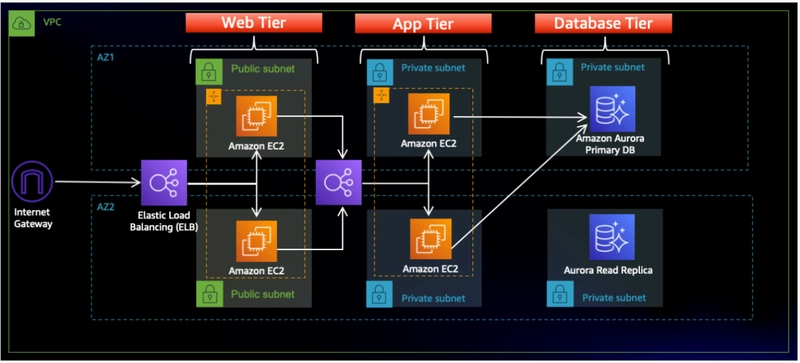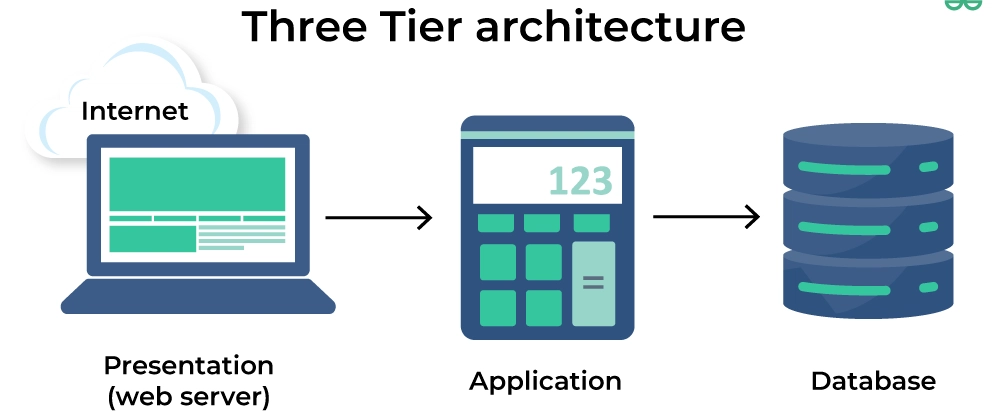
Mastering the 3-Tier Web Architecture: A Dev's Guide
In the world of web applications, efficiency, scalability, and security are crucial. One of the most commonly used architectural patterns to achieve these goals is the 3-Tier Web Architecture. If you're diving into DevOps, cloud computing, or backend development, understanding this architecture is a must. Let's break it down in a way that makes sense.
- What is 3-Tier Web Architecture?
Think of the 3-tier architecture as a well-structured apartment complex. Each floor has a specific purpose, ensuring smooth operations without interference. In a web application, these tiers are:
Presentation Tier (Client Layer) – This is the front-facing part of the application, where users interact. It includes web pages, mobile applications, or any UI framework. Technologies like HTML, CSS, JavaScript, React, and Angular rule this layer.
Application Tier (Logic Layer) – The brain of the architecture! This is where all the business logic happens, processing user requests and making decisions. It consists of backend technologies like Django, Node.js, Spring Boot, Flask, or Express.js.
Data Tier (Database Layer) – The foundation where all the data resides. It handles storage, retrieval, and management using relational (MySQL, PostgreSQL) or NoSQL (MongoDB, DynamoDB) databases.
- Why Do We Use It? Adopting a 3-tier architecture isn’t just about keeping things neat; it offers several advantages:
Scalability: Since the tiers are independent, you can scale each component separately. If there's a surge in user traffic, scale the frontend and backend without overloading the database.
Security: Each tier can have its own security measures, ensuring that breaches in one layer don’t compromise the entire system.
Maintainability: Modular design means making updates or debugging is easier, as changes in one layer don’t disrupt the others.
Flexibility: Developers can use different technologies for each tier without affecting the entire application.
- How It Works in a Real-World Scenario
Imagine you’re ordering food from an online platform:
The Presentation Tier displays the restaurant listings and a search bar.
When you select a dish and place an order, the Application Tier processes the request, verifies stock availability, and initiates payment processing.
The Data Tier stores order history, user information, and restaurant details, fetching data whenever required.
- Implementing 3-Tier Architecture on AWS
If you're working in the cloud, AWS offers services to easily implement this model:
Presentation Tier: Amazon S3 (static web hosting), AWS Amplify, CloudFront.
Application Tier: EC2 instances, AWS Lambda, Elastic Beanstalk.
Data Tier: Amazon RDS, DynamoDB, S3 for backups.
- My Project: Building a 3-Tier Web Application
I’m currently working on a project where I’m implementing a 3-Tier Web Architecture using AWS services. This hands-on experience is helping me understand how to structure applications efficiently, ensuring scalability and security. Stay tuned for more updates on my journey!
- Final Thoughts The 3-tier architecture isn’t just a concept; it’s a backbone for scalable and secure applications. Whether you're an aspiring DevOps engineer or a full-stack developer, mastering this model will set you apart in the tech industry. So, the next time you build an application, consider structuring it in tiers—it might just be the key to a robust and efficient system!



Top comments (0)